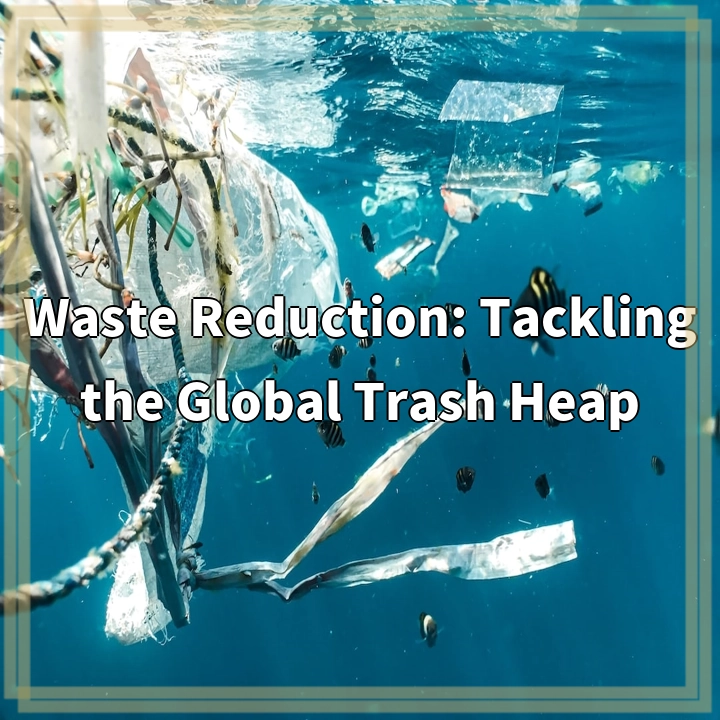
What is Waste Reduction?
Waste reduction is a crucial practice aimed at minimizing the amount of waste generated and its impact on the environment. It involves various strategies and initiatives to reduce, reuse, and recycle waste materials, ultimately reducing the need for landfill disposal or incineration. Waste reduction focuses on addressing the entire lifecycle of a product, from production to disposal, by implementing sustainable practices and promoting a circular economy.
Real-World Problems Associated with Waste Reduction
1. Landfill Overflow: With increasing population and consumption rates worldwide, landfills are running out of space. The excessive amount of waste ending up in landfills leads to environmental degradation, groundwater contamination, and the release of harmful gases, such as methane, contributing to climate change.
2. Resource Depletion: The production of goods and materials requires the extraction of natural resources, which are often finite. Waste reduction helps conserve resources by promoting recycling and reuse, reducing the need for primary resource extraction and minimizing the strain on ecosystems.
3. Pollution and Health Risks: Improper waste management practices, such as open dumping or incineration, can result in pollution of air, water, and soil. This pollution not only harms the environment but also poses severe health risks to nearby communities, especially those living in close proximity to waste disposal sites.
4. Energy Consumption: The traditional waste management processes, including transportation, landfill operations, and incineration, consume significant amounts of energy. By promoting waste reduction practices like recycling and composting, we can reduce energy consumption and mitigate the environmental impact associated with energy production.
5. Wildlife and Marine Life Impact: Plastic waste, in particular, poses a significant threat to wildlife and marine ecosystems. Wildlife can become entangled in plastic debris, leading to injuries or death, while marine life often mistakes plastic for food, causing ingestion and suffocation. Waste reduction efforts help prevent plastic pollution and protect biodiversity.
6. Economic Loss: Inefficient waste management systems can result in significant economic costs. Waste reduction initiatives not only help lower waste management costs but also create opportunities for job creation and the development of a green economy.
Addressing these real-world problems associated with waste reduction requires collective efforts from individuals, businesses, and governments to implement effective waste management strategies, promote sustainable practices, and encourage a circular economy mindset.
Please remember to add appropriate HTML tags to the content when publishing it on a website to ensure it appears correctly.

Solutions for Waste Reduction
There are various solutions to address the real-world problems associated with waste reduction. By implementing these solutions, we can actively work towards a more sustainable and circular waste management system.
1. Source Reduction
Source reduction focuses on minimizing the amount of waste generated at the root by adopting practices that reduce packaging, opting for durable and long-lasting products, and encouraging responsible consumption habits. This approach prevents waste from being created in the first place, reducing the overall waste burden.
2. Recycling and Reuse
Promoting recycling and reuse plays a vital role in waste reduction efforts. Establishing effective recycling programs, educating communities about proper recycling practices, and creating infrastructure to collect, sort, and process recyclable materials can help divert waste from landfills. Additionally, encouraging the reuse of items through initiatives like thrift stores and repair cafes can extend the lifespan of products, reducing the need for new production.
3. Composting
Composting organic waste, such as food scraps and yard trimmings, is another effective waste reduction solution. By composting these materials, we not only divert them from landfills but also create a valuable resource in the form of nutrient-rich soil amendment. Composting can be done on an individual level, community-wide, or through municipal composting programs.
4. Sustainable Packaging
Developing and adopting sustainable packaging alternatives is crucial in waste reduction efforts. Encouraging the use of biodegradable or compostable packaging materials, promoting refillable and reusable containers, and advocating for extended producer responsibility can significantly reduce the environmental impact of packaging waste.
5. Education and Awareness
Raising awareness about waste reduction, its importance, and effective waste management practices is essential for driving change. Education campaigns, community workshops, and school curriculum integration can help instill a sense of environmental responsibility and encourage individuals to make conscious choices that contribute to waste reduction.
6. Government Policies and Regulations
Government intervention plays a significant role in waste reduction. Implementing stringent waste management policies, setting recycling targets, providing incentives for sustainable practices, and enforcing regulations can create a conducive environment for waste reduction initiatives to flourish.
By adopting these solutions and working collectively, we can make substantial progress in waste reduction, mitigating the environmental, social, and economic impacts associated with waste disposal.















